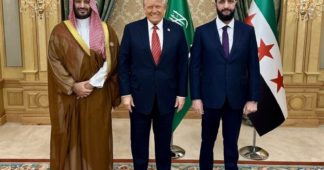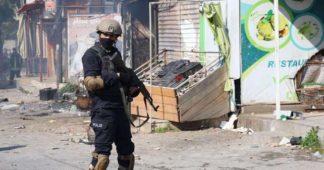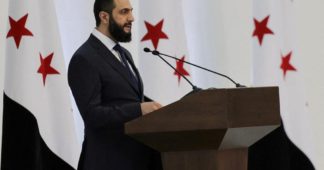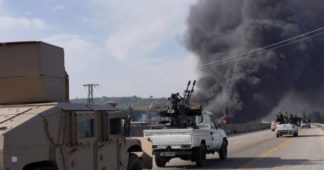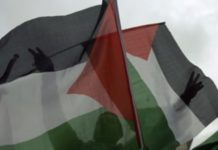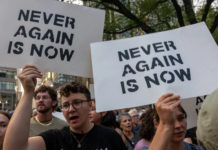Heidi Pett*
Jun 26, 2025
Last March saw a civilian massacre in the Alawite region of coastal Syria. Many victims in Al-Rusafa hold Ahmed al-Sharaa’s new government responsible.
Last Sunday in Syria, a man walked into a Greek Orthodox Church during evening prayer, opened fire, and then detonated a suicide bomb. He killed 22 people, and wounded more than 50.
President Ahmed al-Sharaa promised to protect minorities in Syria when he took power. In the six months since, a number of plots by the Islamic State group to attack minorities have been prevented, including an attack reportedly on al-Sharaa’s own life. The group, however, is not the only one targeting Syria’s religious and ethnic minorities: witnesses to the mass killing of Alawite civilians hold militias part of al-Sharaa’s own government responsible.
Three months ago, between March 6 and 10, across Syria’s coast, a massacre occurred on the scale of the 2013 Ghouta chemical attack under Assad’s government. Estimates claim that the March massacre in Syria killed over 1,500 people.
It began with an uprising by elements of the former Assad regime, followed by a much larger and violent backlash by militias affiliated with the current Syrian government. The civilian massacre runs counter to the image that al-Sharaa has tried to project globally in order to encourage the U.S. and other western countries to ease the debilitating sanctions on the country. Al-Sharaa promised to open an independent investigation into the violence, but the results of that investigation have been delayed and may not be made public.
Shortly after the massacre, reporter Heidi Pett visited Al-Rusafa, a village where unarmed men were systematically taken from their homes and executed. Four children and two women were also killed. In a recent interview, a Syrian government official did not inspire confidence that the perpetrators would be brought to justice by al-Sharaa. Though they had conducted over 1,000 interviews, he told Pett, “The scene is very complicated; there were a lot of actors involved.” He indicated there may have been Russian involvement in the initial uprising, but did not provide detail: “There is evidence, but I’m not going to discuss it.”
When asked about the killing of civilians by Syrian government-aligned fighters, he deflected and pointed toward the involvement of pro-Assad remnants. “We did hear from survivors that some of them were threatened before the 6th to pressure them into taking part in the insurgency events which began on the 6th of March,” he said.
The interviews given to Pett by many in Al-Rusafa are shocking in their brutality. As attention on Syria turns toward its possible posture toward Israel’s war on Iran, those massacred in the early days of Al-Sharaa’s new government are looking for justice they might not find.
If you are a free subscriber and you support our work, please consider upgrading to a paid subscription or gifting one to a friend or family member. You can also make a 501(c)(3) tax-deductible donation to support our work.
—Nausicaa Renner
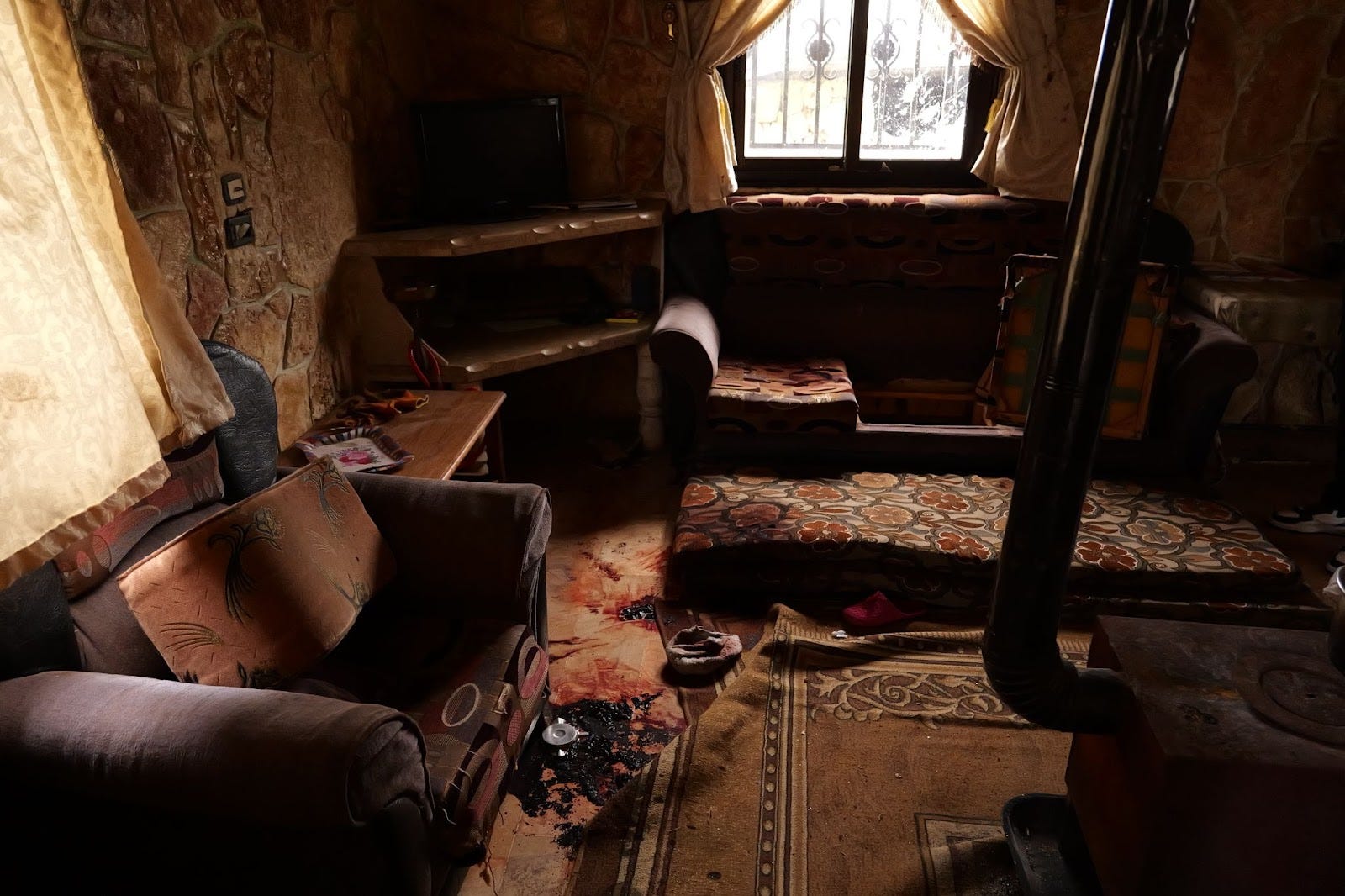
“Curse your soul,” says a voice behind the camera. Someone next to him fires a shot into the body of a man lying on the ground, who is unarmed and wearing striped tracksuit pants. The gunman shoots again: two, three—a total of eleven times. “You pig,” the voice says, as a third kicks the lifeless body off the edge of an embankment. The body rag dolls to the ground below, leaving a red stain on the concrete.
The man killed, Haidar Bassam Assad, was 30 years old. He worked as a woodcutter in the village of Al Rusafa, Syria, bringing in between 15 and 30 thousand Syrian pounds (roughly £2) a day for his wife and two children. He is among more than a thousand civilians who were killed during a weekend of extreme sectarian violence last March. Like most of them, he was Alawite, a member of the same minority sect as Syria’s deposed dictator Bashar Al-Assad. Under the old regime, the family promoted Alawites to senior positions in the security services responsible for the brutal repression of the population, deepening sectarian divides. When Al-Assad fled, many of these senior officers also left the country. Those who couldn’t retreated to their villages in the coastal mountains of Syria and went into hiding.
On March 6, gunmen loyal to the old regime launched a series of coordinated attacks on the country’s new security forces. The failed insurgency sparked a wave of retaliatory violence against civilians. In Alawite neighborhoods and villages, across the coastal cities and mountains, fighters and armed individuals roamed for days—looting, burning, and summarily executing civilians.
Reports by human rights organizations and early statements by Syrian president Ahmed Al-Sharaa pointed to the involvement of armed groups allied with the government which have since been folded into the new military and security services. The Syrian Network for Human Rights found that “Local factions and foreign Islamic organizations, formally under the ministry of defense, played the most prominent role in committing these violations.” According to The New York Times, one official admitted that “At least some government soldiers deployed to restore order also participated in the killings.”
In the immediate aftermath of the attacks, speaking to Reuters, al-Sharaa promised accountability and said that the government “won’t accept that any blood be shed unjustly. No one involved, he added, would go “without punishment or accountability, even among those closest to us,” apparently acknowledging that armed groups integral to his seizure of power were involved in the violence.
A preliminary report by Amnesty International on April 3 similarly attributed the killings to “militias allied with the government” and called for the killings to be investigated as war crimes against the Alawite minority. Syria’s new leaders then changed tack. A member of the interior ministry said Amnesty’s report was biased and that they should wait for the findings of the government’s own investigative committee, which was due to issue a report on April 9. That has now been delayed until July after committee members asked for more time.
At first, its teams had difficulty earning the trust of Alawite communities. A month after the massacres they had collected less than 100 statements. After bringing seven Alawite women on board to conduct interviews and take notes, they have now collected more than 1,100 testimonies from victims and witnesses and visited 42 locations.
A member of the committee—who has been granted anonymity because they are not authorized to speak publicly before concluding their report—told Drop Site that they are yet to decide whether it will be made public. If they do, it seems increasingly unlikely that any specific armed groups or individuals will be named, despite earlier commitments to do so.
“Since the beginning, having a list of suspects was one of the main goals of the committee,” they said. “We have a list of people suspected of being involved in the violations but this list is still under consideration and discussion. Further investigation is required to establish whether they are factions or individuals.”
They would not be drawn on who those factions or individuals are, and according to two sources who have had dealings with its members, the committee is under pressure to not name perpetrators to avoid inflaming tensions.
The committee member emphasized the independence of the body, that they had met and been able to speak freely with many levels of government, and their work had not been subject to any interference. While there is still debate among its members as to whether this should be a special tribunal, they said it should be the Syrian judiciary’s role to name and bring cases against those responsible. Syria’s interim constitution grants President Ahmed al-Sharaa sole power to appoint all members of the supreme court.
In the six months since al-Sharaa swept into power in December, he has sought to reassure Syrians and the international community that his group, Hayat Tahrir al Sham (HTS), and the alliance of other armed factions who fought their way to Damascus, have abandoned their radical roots. HTS and other groups had been listed as terrorist organizations and subject to international sanctions, but they’ve since formally dissolved and have been brought under the authority of the new national army. To secure international support and sanctions relief, al-Sharaa has worked to convince the world that his government is committed to delivering an inclusive Syria. The massacres were a major blow to this image.
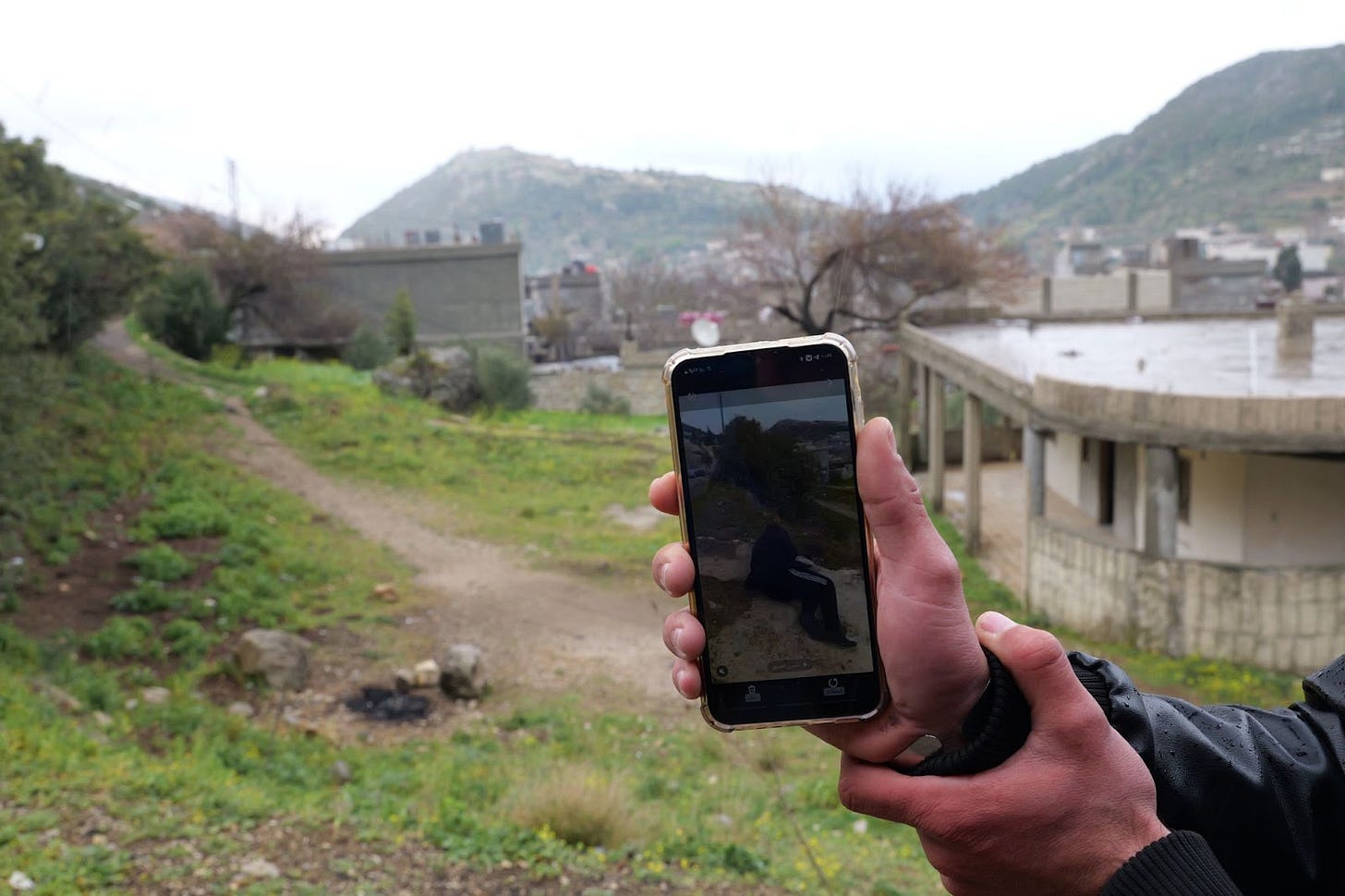
An Ambush That Led to A Civilian Blood Bath
The video of Haidar Bassam Assad’s death was one of many that were filmed by fighters and shared widely on social media at the time. Drop Site visited Al-Rusafa in mid-March, two weeks after Haidar was killed. As depicted in the video, the blood stain on the road was still visible. In fact, there were several large bloodstains on the pale concrete. As a young man from the village explained that three others were killed here, a woman emerged from the nearest building. One of those shot on this road was her husband. “They took him from the house, and I was shouting, telling them he was a nurse, but they shot him in the street.” She began to sob. “I have four daughters, how will I raise them?”
Bloodstains in Al-Rusafa mark the roads, blemish the floor of the kindergarten, and have seeped into the furniture in one family’s lounge room, where four children under the age of ten were shot and killed. No house is untouched by tragedy in this village of 3,000, which sits in a small valley in the foothills of Syria’s coastal mountains.
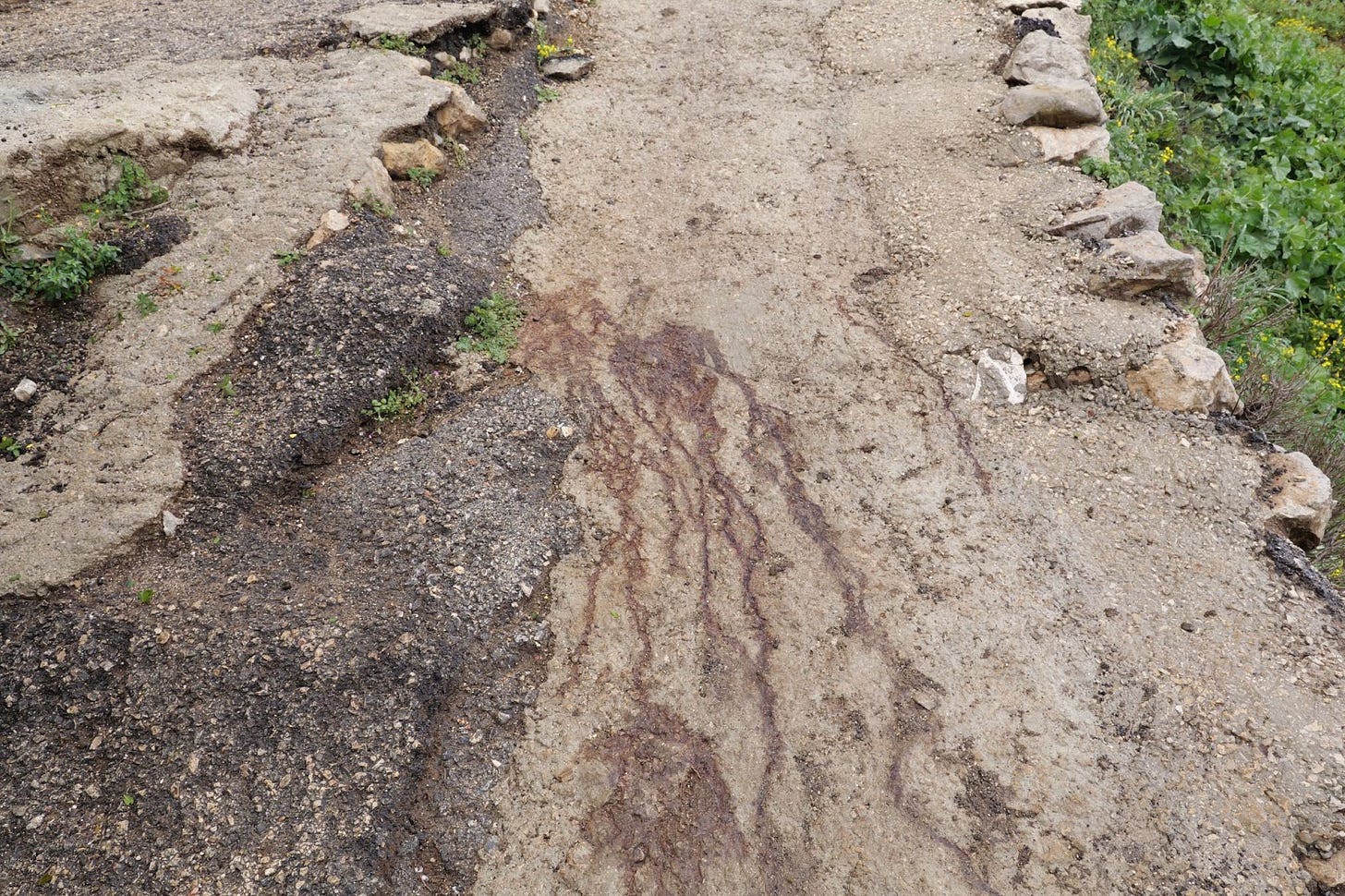
The brutal toll in Al-Rusafa is 63 dead, among them the four young children and two women. There were 18 survivors with gunshot wounds. 75 of the community’s 300 houses were looted or burned. 200 livestock remain missing. 35 cars and 70 motorbikes were stolen. Water tanks and solar panels were destroyed. The massacre happened the day the village’s cooking gas was to be delivered, and the entire supply was stolen along with the resident’s gas bottles and the money they had exchanged for refills.
The violence that led to this devastation and destitution began with an ambush, one of many assaults across the region on the evening of Thursday, March 6. A cell of pro-Assad gunmen laid a trap roughly 5 kilometres, or 3 miles, up the mountain on the road between Al-Rusafa and the next village, Sindyaneh. There were still remnants of an old regime checkpoint at a narrow point in the road. At 10 p.m., a routine patrol of new government security forces approached.
“When we reached a checkpoint that belonged to the old regime, a pickup car stopped and shot at us twice,” said Azzam Abu Odai, the deputy manager for the region. “It was a plan to draw us into a bigger ambush in a narrow and steep valley, surrounded by three hills. They trapped us in the valley and started shooting at us with rocket propelled grenades, PK machine guns, and Kalashnikovs.” The fighting lasted until reinforcements reached the patrol at around 4 a.m., he said. Dozens of similar incidents played out as pro-Assad gunmen attacked security posts, patrols, and police stations across the coast and in the cities of Latakia, Tartous and Baniyas. More than two hundred members of the new security forces were killed, according to the government.
Thousands of reinforcements from across the country poured into the region. General Security, the main branch of the new Syrian police force; armed factions recently folded into the new military; and ragtag individuals responded to calls for a general mobilization circulating on official government channels on social media and in the mosques. One of the main routes passed through the town of Masyaf before winding up to Al-Rusafa. Several residents of Masyaf testified that armed factions met and coordinated with official security forces at the town’s police station before their convoys set off into the mountains.
“The ones who came to support them were in civilian clothes, but with bulletproof vests stuffed with ammunition,” said one witness. “Some of them were in General Security uniforms, and they were standing with each other, greeting and welcoming each other. I saw many cars; militias with all kinds of weapons headed up that road to the mountain.”

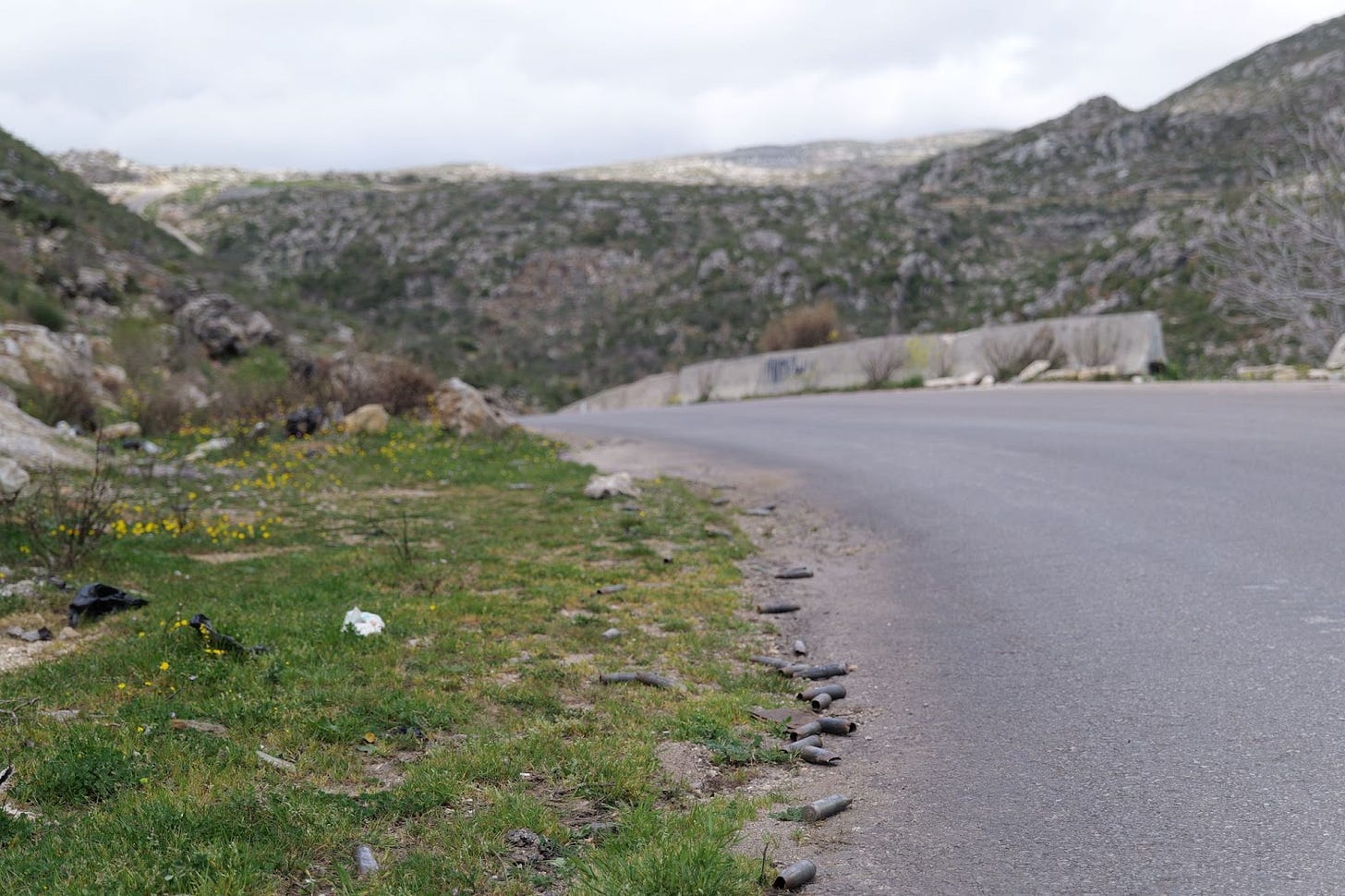
Al-Rusafa is only a ten-minute drive from Masyaf. At 7:30 a.m. on Friday, in a house on the main road, a mother heard gunshots, and she moved to hide with her children in the back room. Men with guns had shot off the lock on the front door. “My husband went to the door. Outside was General Security, and some factions,” she said.
She guessed that at least some were foreign fighters by their appearance, and because they were wearing a long tunic typically associated with Egypt or Sudan, since adopted by international jihadis. “I don’t know exactly who the factions were, some had long beards and wore jalabiya,” a style of dress rarely seen in Syria until Islamist fighters from abroad joined the civil war.
“They made us go down to the road and lie on the ground, humiliated us, shot between our legs.” She and her four daughters were eventually herded back inside along with her parents, her sister, and her sister’s children who lived in a neighbouring house. Her husband and teenage son were kept outside.
Across Friday and Saturday, multiple armed factions came to the house, threatened the family and called them “Alawi pigs.” “They stayed two days in the village and took everything—gold and mobile phones,” she said. They threatened her and her sister with rape, demanded their money and their men. Her 60-year-old father was taken by one of the later groups, shot three times in the legs, and left in the street bleeding and screaming for seven hours. The family were not able to go out to help him, but new groups of fighters were drawn to the sound. “Factions would come to the house and ask ‘who did this?’ They would say it wasn’t them.”
She and another unrelated villager named two groups responsible for the slaughter: the Idlib-based Ahrar al Sham, and Jaysh al Islam, an armed faction that convened near Damascus during the Syrian civil war and whose fighters evacuated to Idlib in a 2018 deal with the regime. Others, she said, bore the red headbands worn by HTS special forces, a group dominated by foreign fighters. The family asked each new group of armed men at the door to identify themselves. “Everyone would say something different.”
This continued for days. “On Sunday, they said you can go out and see what we did.”
Her husband’s body lay nearby. He, like many members of the Alawite sect, had served in the army under Assad but had handed in his weapons and military ID to the new authorities. She said that all the men in her family had done the same, or never served to begin with. Her father and three of her brothers were killed. “And my husband’s three brothers also.”
All the men in Al-Rusafa who had served in the police or military, she said, had handed in their weapons, so there was no fighting between former forces and the armed men inside the village. When the government crumbled in the face of an advance by HTS and allied groups in December, many of the country’s Alawites were surprised and grateful that the fall of the 54 year-old Assad family dictatorship was relatively bloodless.
“If we knew this would happen, we wouldn’t have handed in our weapons so we had something to defend ourselves and our honor, but they betrayed our trust.”
She believes that unarmed men and civilians were killed in Al-Rusafa in revenge for the ambush laid by pro-Assad fighters up the road. “General Security, the factions, and the army couldn’t get there, so they took it out on people here because they couldn’t get who they wanted.”
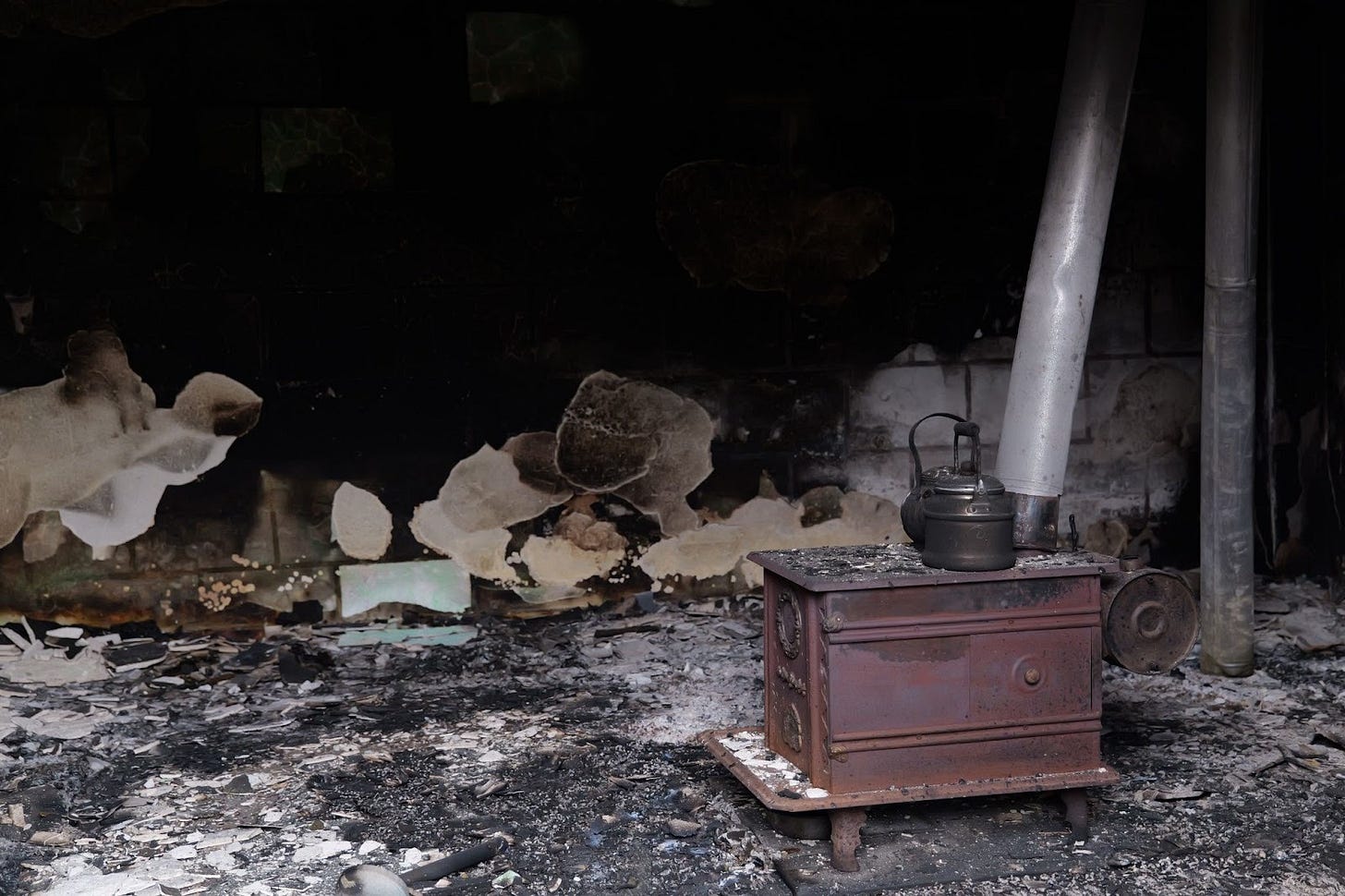
Instead, starting on Friday morning, groups of Syrian and foreign fighters fanned out across Al-Rusafa. They went door to door and pulled boys and men into the street and shot them. In all, Drop Site spoke to more than a dozen people who testified that multiple armed factions arrived, making contact with members of the new General Security as they moved through Al-Rusafa.
A man who lives near the entrance to the village described the line of vehicles entering Al-Rusafa. “First, on Thursday [night], it was General Security and other factions in the same convoy.” As the mass killings began on Friday morning, “Things got out of control; it wasn’t clear who was who, and who was with who[m].”
He is clear about one thing though: “It was General Security that put a siege on the town, and the factions didn’t leave until they did.”
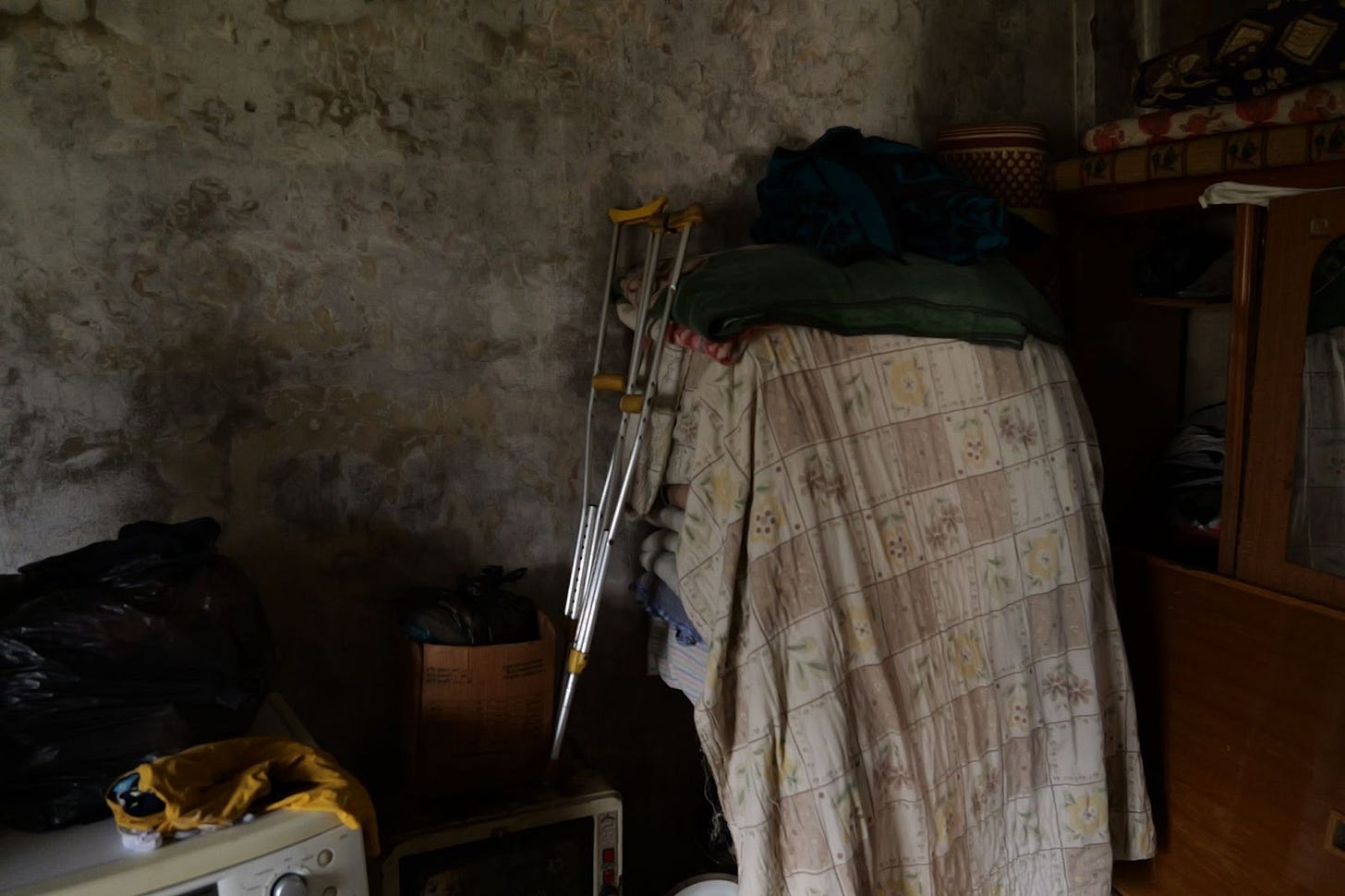
Around 8 a.m. on Friday, armed men came to a smaller house in the middle of the village where Ali* (pseudonym) lived with his four sons.
“They came and took our mobile phones and said they would reset them. And then, after that, 20 men came to take my sons out of the house.”
All of Ali’s sons had served in the army, which was common for the area. While prominent Alawite families prospered under the patronage networks of the Assad regime, the villages were deliberately economically depressed so the military was often the only job available. Ali’s sons had already finished their service by the time the regime fell, and the settlement process with the new authorities required that they hand in their weapons and military identification papers. One had been injured during his service; a set of crutches leant on a mattress against one wall. There were no carpets on the concrete floor, only a set of plastic chairs and a stool topped with glasses of mate, a herbal tea popular in most Alawite homes.
“Different groups and factions came 10-15 times on Friday and Saturday, some in all black with the white and black headband. They were Syrian. Others were wearing the Syrian army uniform, the one we used to see. Then there were others in army clothes and they were mixed, some foreigners although I couldn’t tell their accent.”
For two days the elderly father and some younger relatives were corralled into one room, while fighters occupied the other and roamed outside. Occasionally they would enter, taking anything of value: including the small battery that many Syrian families use to power lights during the country’s frequent power cuts, and even the men’s papers and temporary civilian ID cards they’d been given. “You can’t move around without ID or pass checkpoints,” Ali said. “So now even if we wanted to pass the checkpoint if we don’t have ID they can just take us.”
On Saturday afternoon, the armed men, who had already taken over his house, called Ali outside to bring them more wood for the fire. He found his four sons dead in the animal pen—the wall riddled with bullets.
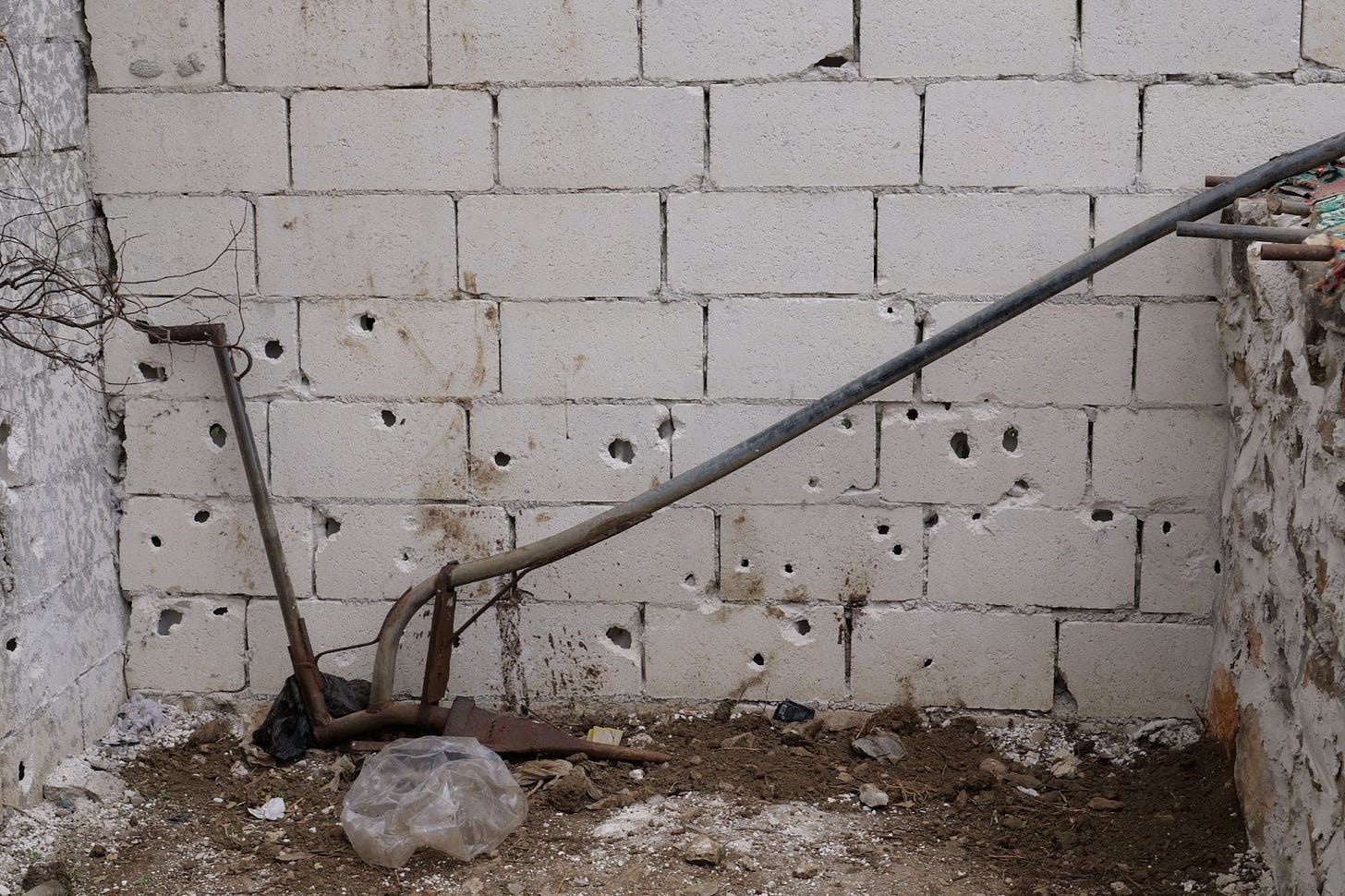
Asked if there was any fighting inside the village, Ali and his relatives immediately clicked their tongues. “No, no no. They said they came to search for weapons, but my sons were killed barefoot. They’re acting like big men against us, and we are so poor. They killed people who have nothing. In some of the houses, they would not even have a chair to offer you.”
Sitting on the floor in the house next door, his jacket pulled tight against the cold, another father told his story. Ten men showed up at his door that Friday morning. “The first group took both my sons. Then another group came; they brought my youngest son back when they saw he was a child.”
This group was more disciplined, even kind, he said. “The faction who brought the young one back asked ‘What do you need?’ and I said ‘I need my other son.’”
Not long after, the father received several calls from his elder son’s mobile. He begged the men on the other end to let him go. “The last time they said ‘We sent him to Hafez Al-Assad [Bashar Al-Assad’s father, who ruled Syria until his death in 2000], and took his heart out.’ They told me to go find him before the dogs eat his body. We found him dead in one of the alleys off the main road. He had three bullets in his chest.”
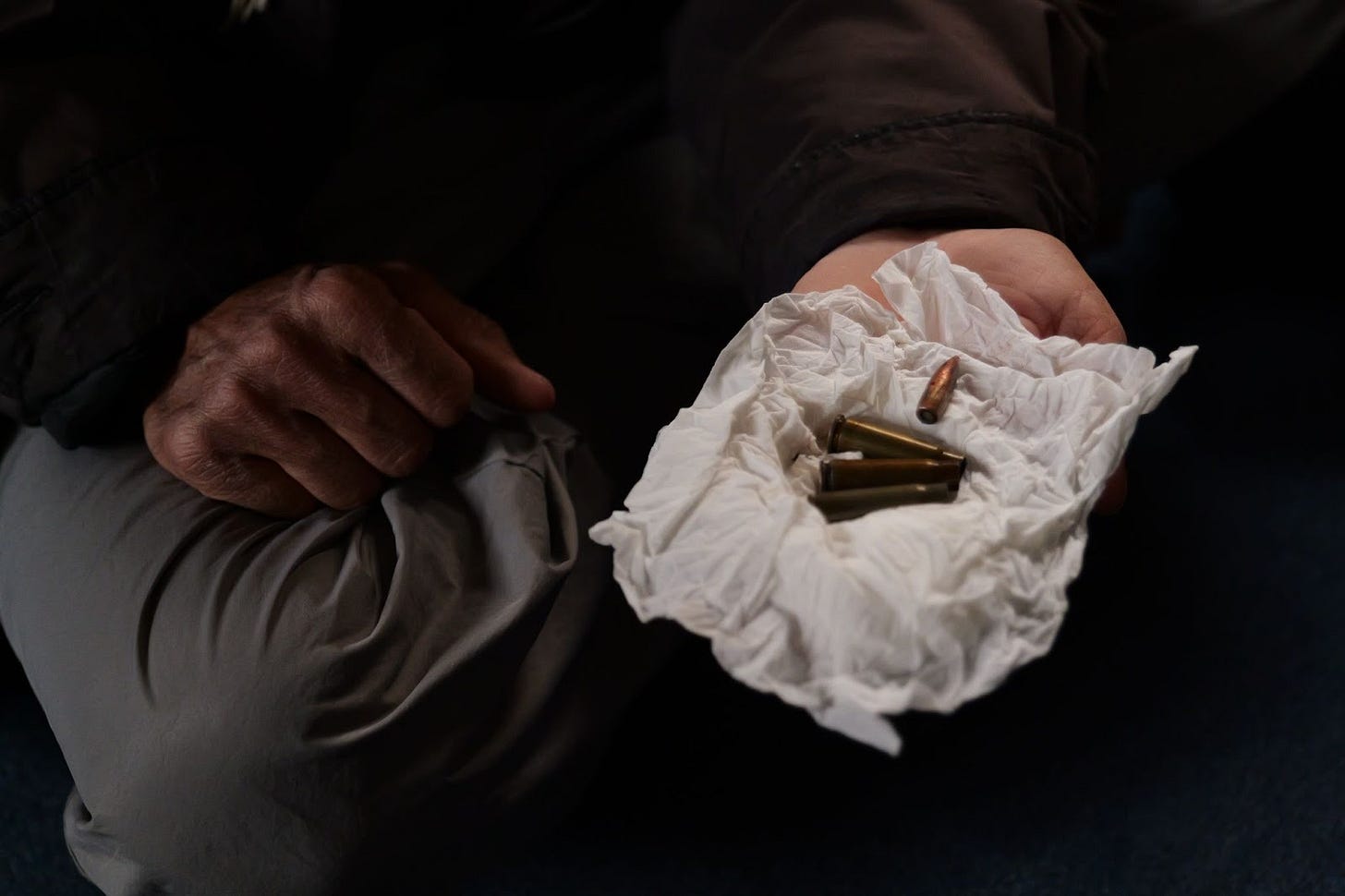
He reached inside the pocket of his jacket and unfurled a crumpled tissue to reveal the three bullets he had pulled from his son’s body. He drew a line down his own chest and began to sob. “I saw that they did take his heart.”
“We brought the body back under fire. Everyone told me it was dangerous, but he’s my son, I had to bring him.”
He and his neighbor dug five graves in the field between their two houses by hand.
“They claim this village was pro-regime, but look at the conditions here, it doesn’t make sense.”
Save for a handful of larger ones on the main road, Al-Rusafa’s houses are mostly concrete breeze blocks, poorly insulated from the cold or the heat. The men work as woodcutters, or in the small fields around their houses on the floor of the narrow valley. With little other opportunity, many joined the army—some in combat and others working in store rooms and support roles. The villagers insist they knew nothing of the pro-regime ambush, and point to the massacre of their men as proof: if they had known something was afoot, they would have left their homes and hid rather than waiting for a knock on the door and a shot to the head.
“We were targeted because of the village being Alawite. It’s collective punishment. They didn’t follow any rules. If somebody is a criminal, you punish that person—not the whole community.”
Since the fall of the regime, Syrians have called for two things: bread and transitional justice. Many draw a direct link between the lack of accountability for atrocities under Assad and the explosion of violence on the coast. Without holding individual perpetrators to account, many Alawites feel their entire sect is paying for the crimes of a regime that conscripted their sons and kept their villages in poverty.
After HTS and other allied factions toppled the old government, there is a newly popular word in Syria: fulul. Roughly translated as “remnants,” it is used to refer to anybody who worked for, or is still sympathetic to, the Assad regime.
“They say everyone is fulul. If there is somebody here who is, please take him. We suffered a lot during the regime times. Economically, and we lost a lot of people who were forced to join the army. Some of us were hopeful that this would be the end of a brutal era, but what we’ve seen is actually worse.”
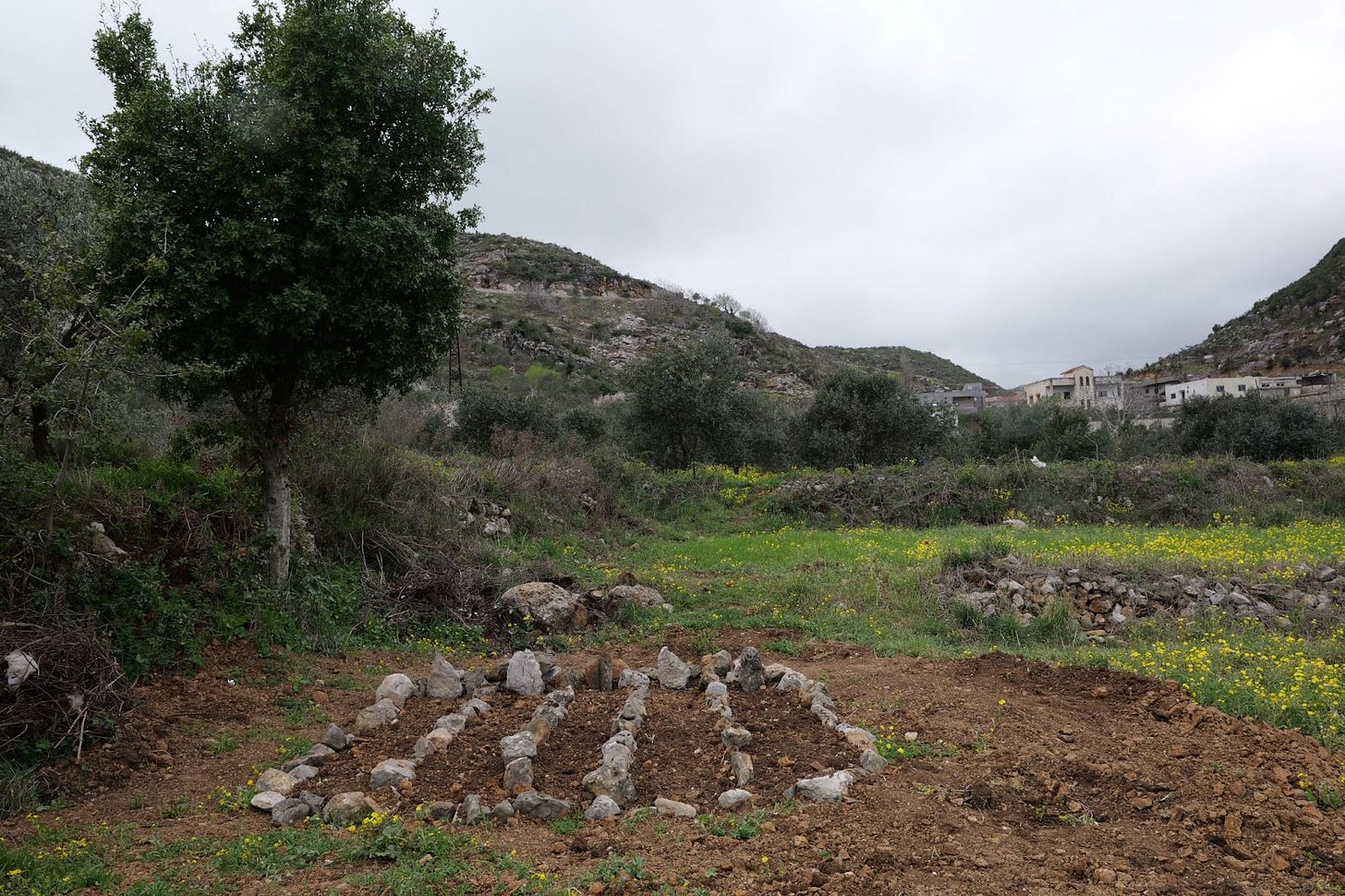
The worst massacre in Al-Rusafa occurred in a fourth house above the village, according to villagers. Two women and four children were murdered. Nobody is clear on why, but some guess it is because one of them, a nine-year old boy, was named Bashar. He was visiting his cousins that day, and the three siblings—Zein, 3; Jawad, 4; and Yahya, 10—were killed along with their mother and grandmother.
His grandfather’s white beard was yellowed by nicotine. On Friday, just before 5 p.m., he stepped outside to get some more wood for the fire. He was stopped and made to stand by the front door.
He said he heard the shots ring out inside, but didn’t initially realize what it meant. “I didn’t believe they would really kill the children.”
The bodies stayed in the lounge room for three days before he was able to bury them.
“The crime scene is still as it was with the blood. We didn’t touch anything. We were hopeful also that international organizations would come, but nobody came.”
Instead, General Security sealed the village for days. Neither the White Helmets nor Syrian Red Crescent was permitted to assist with burials, and so families buried their relatives without any examination of the bodies or the sites where they were killed. It took nearly three months for the government’s investigative committee to visit.
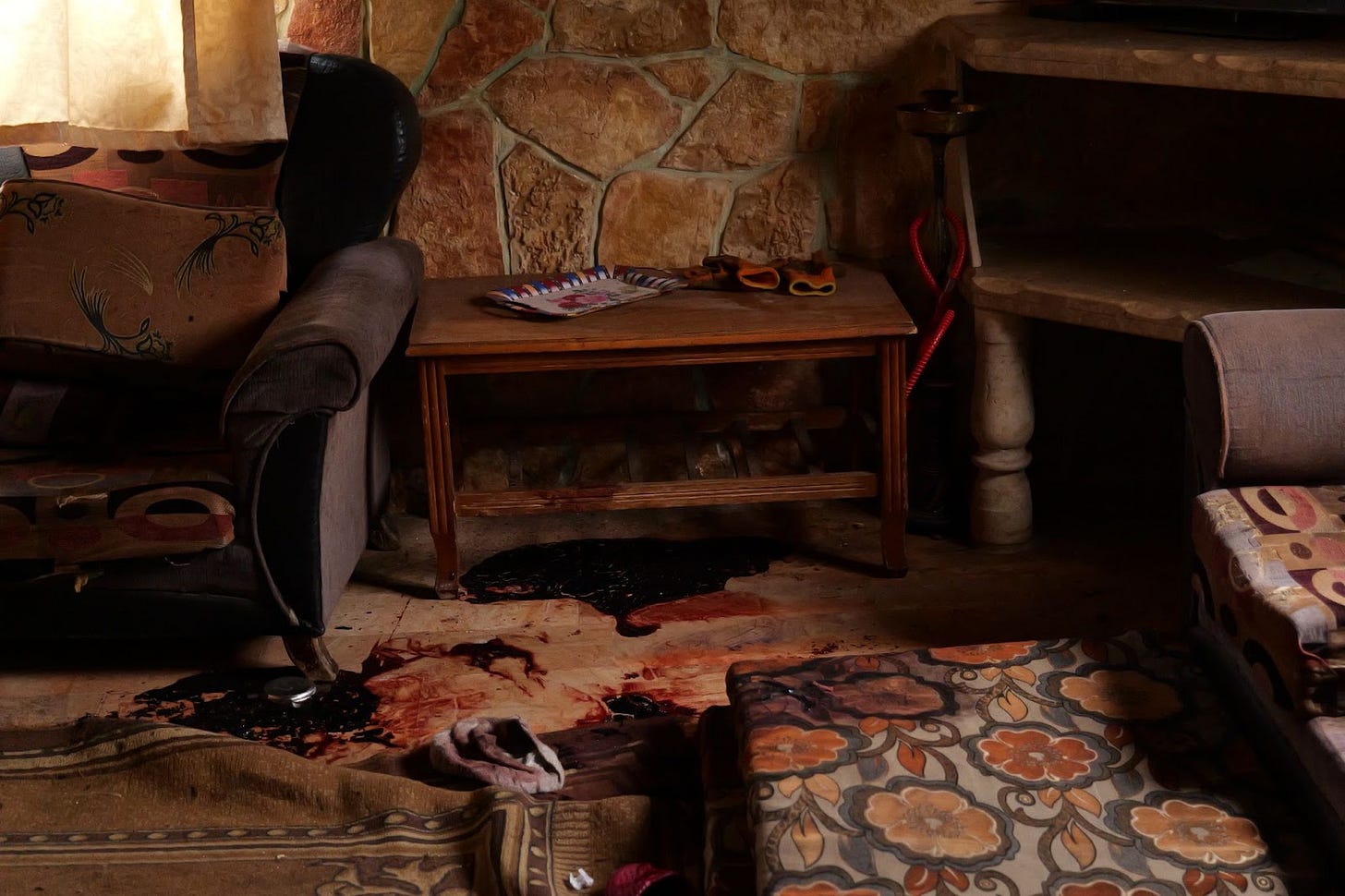
Victor’s Justice
Meanwhile, local leaders of General Security and political officers in the new government are running with a new narrative: the killings were staged.
Two weeks after the massacres, Drop Site visited the main police station in Masyaf, where the security patrol had departed before being ambushed above Al Rusafa—the incident which set off the violence on March 6. This was the same police station where locals had described armed factions meeting with General Security before travelling in convoy up to Al-Rusafa in the hours and days following.
I was surprised to be welcomed in for an interview. Azzam Abu Odai, the deputy head of General Security, took off his bulletproof vest and put his rifle and pistol away before sitting down to talk. I began by asking him about the ambush.
“We ran out of ammunition, so we asked for backup from Hama and Masyaf. They sent us armored cars and they came to get us.”
He explained that the reinforcements who came to assist him and his men were with the government. “It was only the army and General Security—no factions. There’s no such thing as factions [anymore], we are just the army now.”
I clarified. “So everyone who came was under the control of General Security?”
“Yes, of course. We lost martyrs and some were wounded from our side. One killed and two wounded.”
Abu Odai then sought to conclude the interview, but I clarified one more time that all the reinforcements who passed through were under control of General Security—not just those who reached the ambush point itself. We had not yet discussed the killings in Al-Rusafa.
Abu Odai smiled, and raised the topic himself: “I understand what you’re trying to do. You want to talk about Al-Rusafa. We’ve been through a lot; we weren’t born yesterday.”
He went on to explain that, in fact, it was remnants of the regime and its associated gangs, known in Syria as shabiha, who committed the massacres and then blamed it on the state. In his telling, after setting a trap for the General Security patrol on the road above the village, these shabiha had been able to loop around and descend on Al-Rusafa to cause chaos and fear among the population.
“The shabiha were using our names and killing people. They were wearing General Security uniforms and killing people.”
“They didn’t accept they’d lost the country; it was a coup attempt. The former regime supporters wanted to shake the safety and security of the area. They didn’t accept that people started to embrace the new state. So they started to wear our clothes and kill in our names.”
Abu Odai insisted that the villagers believed this. But of the dozen who Drop Site interviewed, all expressed a feeling of betrayal and fear of the new authorities. “Everybody is afraid for their families,” one explained. “There’s nobody to go to for justice because the state is the perpetrator.”
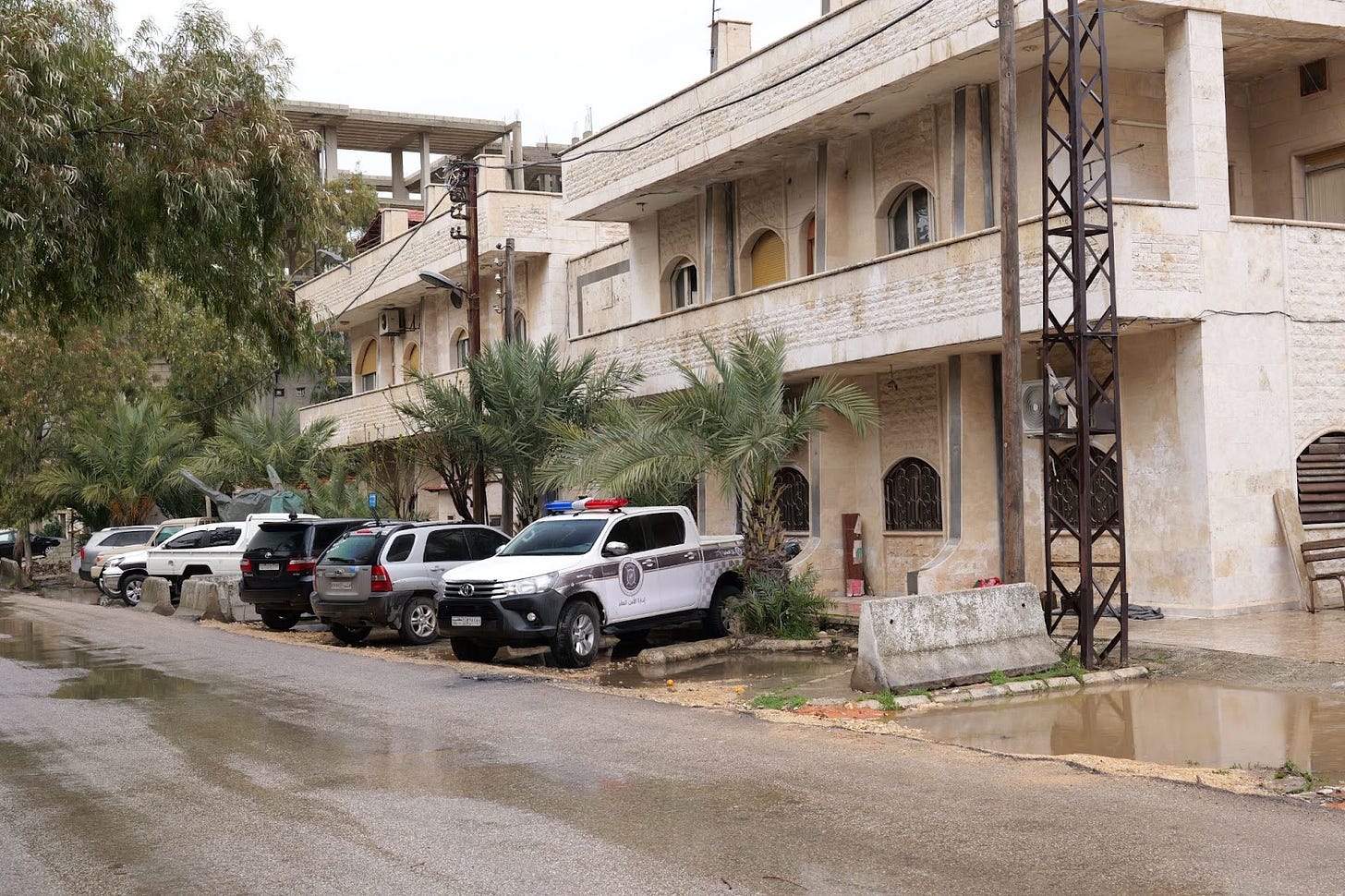
Another recognizes a man who took part in the violence. “He was wearing a Saudi flag on his arm but now he’s going round wearing a revolutionary flag on his arm in General Security uniform apologizing to people, saying ‘This wasn’t us, it was uncontrolled unsupervised factions.’ We find it ridiculous and insulting.”
Across Syria, thousands of Alawites have lost their jobs, whether because they served in the military or were fired from positions in the civil service. The cautious relief many expressed at the relatively smooth transfer of power has calcified to deep mistrust. Syrians of all stripes want to see justice not just for crimes committed by members of the Assad regime, but also for those committed by the patchwork of armed groups who proliferated after the revolution descended into war—some now members of the new government. They fear that what they will get is victor’s justice.
Six months after they took power, the leadership appointed a transitional justice committee; its leader is a cousin of the justice minister.
In Masyaf, the week after the coastal massacres, the community held an event to commemorate some of the first protests of the 2011 uprising. Heavily armed members of General Security stood by the stage, singing revolutionary songs alongside the crowd. A young pharmacy student, her hair in two braids, stood with a few friends from school. “I’ve come to celebrate the anniversary of the revolution even though it’s not finished. And to commemorate the civilians who died this week.”
She said the revolution would only be complete when the killing of innocent civilians stops. “In the beginning the revolution was to end in justice, and so long as this is still going on then the revolution hasn’t won.”
We remind our readers that publication of articles on our site does not mean that we agree with what is written. Our policy is to publish anything which we consider of interest, so as to assist our readers in forming their opinions. Sometimes we even publish articles with which we totally disagree, since we believe it is important for our readers to be informed on as wide a spectrum of views as possible.


